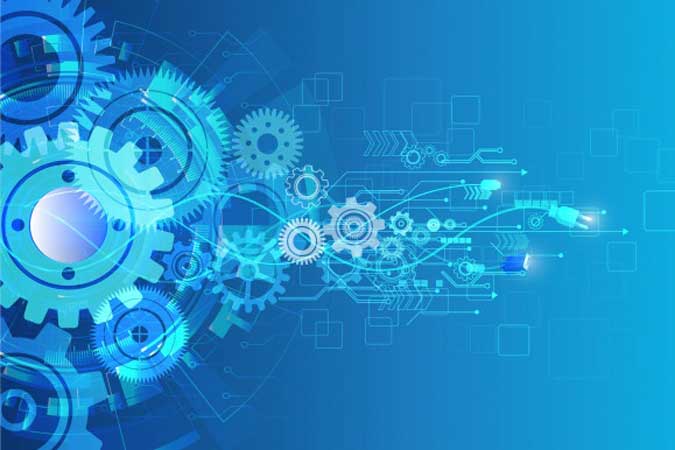
Human Side Of Economics
By Bernardo M. Villegas

Part 3
When the Philippines attempted to industrialize upon obtaining political independence in 1946, it faced two major handicaps. First, as we discussed in the first article in this series, it lacked the green revolution that preceded much of the First Industrial Revolution that occurred in the Western World and in Japan. The productivity of the food and feed sectors was very low. That meant very low incomes accruing to the 50-60% of its population that worked in the countryside. As the economy tried to move to the second stage of industrialization (Industry 2.0), the inward-looking policy of protectionism and import substitution made it difficult for such industries as iron, steel, machine tools, paper making, chemicals, rubber, and bicycles to attain economies of scale because of the limited purchasing power of the masses and the relatively small population, which did not exceed 25 million people after the Second World War (as contrasted with our 110 million inhabitants today).
Thus, with the exception of the food manufacturing enterprises that flourished during that period and are now predominant in our local industrial sector (e.g., San Miguel Corp., the Robina group, Century Canning, Monde Nissin, Unilever, Nestlé, etc.) most of the attempts to put up such major industries as iron, steel, paper, machine tools, rubber, and motor vehicles failed upon the liberalization of international trade. Even an industry that belonged to the First Industrial Revolution did not survive: textile manufacturing. In contrast, our Asian neighbors like Singapore, Taiwan, South Korea, and Malaysia were able to overcome the handicap of a small population by focusing first on very labor-intensive, export-oriented industries which led to full employment of their labor force and provided the small population with sufficient incomes for them to support the viability of the heavy industries that flourished in the second stage of industrialization. In the case of Taiwan and South Korea that have limited land resources, their governments’ focus on rural and agricultural development in the initial stage of development also provided higher incomes for the farmers that supplemented the wages of the industrial workers in creating a domestic market large enough to make the heavier industries economically viable.
The good news today is that thanks to Filipinos’ the preference for big families, our population has swelled to four or five times its level in the 1950s. Like countries such as China, India, and Indonesia, our economy does not have to be dependent on exports (such as our neighbors Singapore, Taiwan, Malaysia, and even Thailand) for long-term economic growth. Given the appropriate complementary policies from the State, many of these Industry 2.0 sectors can become economically viable without tariff protection, especially as we intensify our presence in the ASEAN Economic Community, a free trade area that consists of some 650 million consumers coming from 10 member countries. True, we still have the highest poverty incidence of more than 20% of the population in East Asia. We are, however, already endowing at least 80 million of our population with increasingly upper-middle levels of income in the next decade or so. Our domestic market can sustain more and more of the industries that failed to take off in the past, such as iron and steel, paper making, machine tools, chemicals, rubber, selected motor vehicles, engines and turbines, marine technology, and fertilizers. Now is the time to actively invite foreign direct investors, especially from South Korea, Japan, Taiwan, Spain, Germany, Italy, and the United States to team up with local investors in establishing these Industry 2.0 sectors.
Fortunately, these manufacturing enterprises are not included in the prevailing constitutional restrictions against foreign direct investments, although, as we shall see later, it will be difficult for the country to lead in the Fourth Industrial Revolution if we do not amend our Constitution and allow more foreign direct investments in such sectors as public utilities, telecommunications, and higher education.
As our economic managers learned from the mistakes of the past and began to liberalize the Philippine economy towards the last quarter of the 20th century, we were able to take better advantage of the Third Industrial Revolution (Industry 3.0) which brought about and advanced the electronics industry during the last decades of the 1900s.
Industry 3.0 can also be described as the electronics age which brought about the widespread manufacture and use of chips. As briefly described by Eric Howard in a blog, the invention and manufacturing of a variety of electronic devices, including transistors and integrated circuits, automated the machines substantially, resulting in reduced effort, increased speed, greater accuracy, and even total replacement of the human agent in some cases. Programmable Logic Controller (PLC), which was first built in the 1960s (I still remember the mammoth computers I used as a doctoral student at Harvard) was one of the landmark inventions that signified automation using electronics.
The integration of electronics hardware into the manufacturing systems also created a requirement of software systems to enable these electric devices, thereby feeding the software development market as well. The production of the Z1 computer, which used binary floating-point numbers and Boolean logic, was the beginning of more advanced digital developments. The next development in communication technologies was the supercomputer, with extensive use of computer and communication technologies in the production process which intensified the move to replace human power with machines.
Apart from controlling the hardware, the software systems also enable many management processes such as enterprise resource planning, inventory management, shipping logistics, product flow scheduling and tracking throughout the factory. The entire industry was further automated through the use of electronics and information technology (IT). The automatic processes and software systems have continuously evolved with the advances in the electronics and IT industry since then.
The pressure to further reduce costs forced many manufacturers in the developed countries like the US, Germany, the UK and Japan to move to low-cost countries. Thanks to the establishment of numerous export processing and industrial zones in Metro Manila and Cebu, the Philippines made up for its notorious lack of export orientation in its Industry 2.0 phase by becoming a major participant in the global supply chain in electronics and semiconductor manufacturing. Today, the largest share in our manufactured exports goes to the semiconductor industry which is expected to recover strongly after the pandemic as the whole world cannot have enough of digital devices like smart phones, laptops, iPads and other consumer electronic products that are vital to the Fourth Industrial Revolution.
Another view of Industrial Revolution 3.0 has been presented by Jeremy Rifkin, President of the Foundation on Economic Trends and the principal architect of the European Union’s (EU) Third Industrial Revolution long-term economic sustainability plan to address the triple challenge of the global economic crisis, energy security, and climate change. According to him, internet technology and renewable energies (solar, wind, geothermal, hydro, and biomass) will merge to create a powerful new infrastructure for a Third Industrial Revolution that would change the world. In Industry 3.0 (which can be simultaneous with Industry 4.0), hundreds of millions of people will produce their own green energy in their homes, offices, and factories, and share it with each other in an “energy internet,” just like we now create and share information online. The democratization of energy will bring with it a fundamental reordering of human relationships, impacting the very way we conduct business, govern society, educate our children, and engage in civic life.
This vision may not be as utopian as it sounds. The university where I work, the University of Asia and the Pacific, has already been saving significant amounts on its Meralco bill after solar cells were installed on top of one of its buildings. I know that there are many universities following suit all over the country, thanks to major selling efforts of companies like Singapore-based WeEnergy.
Another positive note about our local enterprises that enjoy domestic markets large enough to make them attain profitability (without high tariff walls being erected by the Government) is that there is enough evidence that Filipino-owned businesses can hold their own in competing with their foreign counterparts. This is very obvious in the largest manufacturing sector which is food and beverage. Some of our large companies in this sector, such as San Miguel Corp., Tanduay, Zesto, Robina, Century Pacific, CDO, and many others do not have to play second fiddle to the likes of Nestlé, Unilever, Coca-Cola, and Pepsi Cola in their respective market segments. I am confident that Filipino entrepreneurs can count on world class technology and management to be able to compete with multinational corporations in any of the sectors that are contributing our Second Industrial Revolution.
It is heartening to read in the Financial Times (June 26, 2021) that, also thanks to a very large domestic market, Chinese consumer brands are beating their foreign counterparts. Thanks to savvy social media marketing and optimized supply chains, century-old multinational brands are being threatened by Chinese startups. As reported by the Financial Times, “the pre-eminence of Chinese brands marks a turnaround in a country where foreign products have historically been viewed as safer and of higher quality. It poses a big challenge to multinationals that are increasingly looking to China for growth.”
To be continued.
Bernardo M. Villegas has a Ph.D. in Economics from Harvard, is Professor Emeritus at the University of Asia and the Pacific, and a Visiting Professor at the IESE Business School in Barcelona, Spain. He was a member of the 1986 Constitutional Commission.